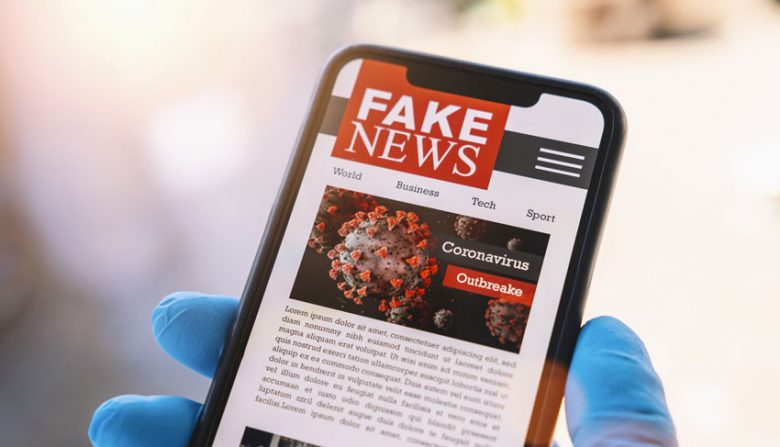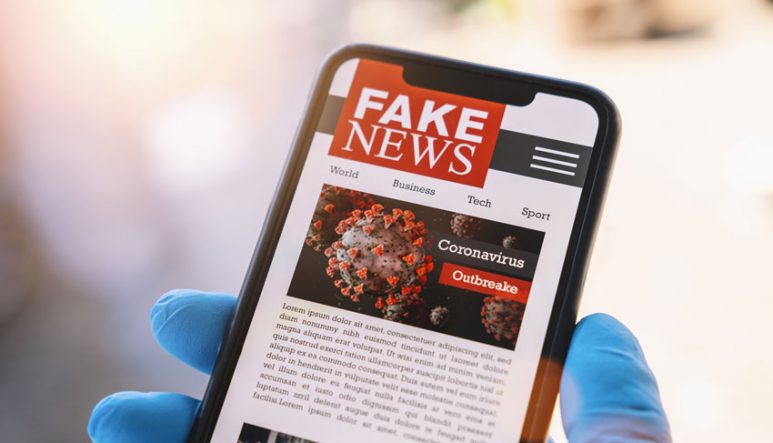This article was initially published on Reporting Diversity Network 2.0
By Marina Tuneva
The COVID-19 crisis isolated the world in an unprecedented manner. It has, unfortunately, also caused waves of isolation of individuals and groups whose rights were affected by the dark phenomena such as discrimination, stigmatization and hate speech. Phenomena that have always been harmful and were even more difficult to control during the pandemic.

Time for science instead of rumors
The Director General of the World Health Organization (WHO), Tedros Adhanom Ghebreyesus, has repeatedly conveyed the message that “this is a time for science, not rumors. This is a time for solidarity, not stigmatization.” The UN Secretary General, Antonio Guterres, has also called on all stakeholders, including the UN system, to double their efforts in addressing the violence, discrimination and exclusion of people, including minorities and vulnerable groups.
Social media continued to serve as platforms for rapid creation and dissemination of various information, but at the same time they also served as a platform for those who decided to use them for wrong purposes, spreading hate speech, misinformation, propaganda and conspiracy theories. Of particular concern is the fact that young people have found themselves exposed to increased levels of hatred on the Internet through online contacts with their friends or connecting with new ones during the pandemic.
Meanwhile, voices are constantly being heard against the abuse of social media for spreading these phenomena. There were also media whose potential was abused in order to worsen inequality and to increase the discrimination against those who are already marginalized. Both social media and media outlets confirmed that they are both powerful and influential, especially during times of crisis. The way they portrayed the health crisis has undoubtedly influenced the way people reacted to it.
What was the reality?
Five percent of the total number of decisions adopted last year during the pandemic by the body for media self-regulation – the Council for Media Ethics of Macedonia (CEMM) – were about hate speech in reporting. Compared to previous years, the number of decisions on hate in the media is declining but this does not mean that the phenomenon has become less present or less dangerous. According to the President of the Appeals Commission at CEMM, Mirche Adamcevski, “this does not mean that hate speech is now less used in the country, but that it is a matter of its relocation from traditional media towards the social media.”
The outbreak of the global crisis caused by the coronavirus in 2020 coincided with the period before the parliamentary elections in Macedonia. These two topics, according to Vesna Nikodinoska, program manager at the Macedonian Institute for Media, “created a charge for escalation of disinformation and hate speech on political and ethnic grounds”. During the crisis, explains Nikodinoska, stereotypes and prejudices, sexism, misogyny and hate speech against women, especially on social media, surfaced. Some examples include several women journalists who were insulted by traditional media or on social media.
The topics that create membership on social media pages and groups arise from the division of the society along political, ethnic and religious grounds. The MIM analysis of communication models that spread hate speech and misinformation indicates that misinformation and propaganda also produce conspiracy theories related to the pandemic as well as various anti-vaccine movements, the 5G influence theories, some global influential people such as Bill Gates, George Soros and others. All these narratives are also intertwined with daily politics.
We also need a “vaccine” against these phenomena
The “Hate speech – international and national legal framework, with special reference to media” analysis refers to the need for greater proactivity of the Public Prosecutor’s Office in dealing with reports of hate speech in the media. The judiciary, on the other hand, should follow the case law of the European Court of Human Rights and take it into account when deciding on individual cases.
Citizens need help to recognize and respond to hate speech by reporting cases they noticed in the media outlets or on social media. In addition, coordination between relevant state bodies, civil society organizations, citizens and the media is required, as well as continuous presence of this topic in the public discourse.
COVID-19 should not be associated with any location, country or region, nationality or ethnicity – this virus can affect people of all backgrounds, nationalities, races, religions, genders or ethnicities.
The media also have a key say
The media have an important role in building awareness on the issues of interest to different groups in society, but also in preventing myths, misconceptions and the existing misinformation.
The Guidelines for Inclusive Media Reporting on COVID-19 refer to the concept of inclusive journalism, which means raising visibility of marginalized groups in topics that do not concern only them. Someone’s age, gender, ethnicity, religion, legal status, disability, marital status and sexual orientation should be mentioned only when they are directly relevant to a particular story. Irrelevant reference to any of the can lead to stigmatization and discrimination.
Both during ‘normal’ times and times of crisis it is especially important to avoid one-sided views. The Maynard Institute for Journalism Education in Oakland, California, teaches journalists to look deeper and more effectively into the society through a framework called “faultlines.” This means analyzing what separates people and the differences that can harm our relationships and social structures.
The cure exists, but it needs to be “applied”.
Photo Credit: r.classen/Shutterstock
Visit Reporting Diversity Network 2.0 for more information on diversity and the media in the Western Balkans

